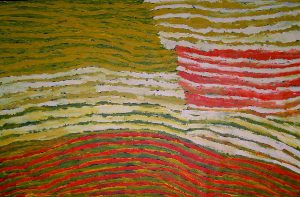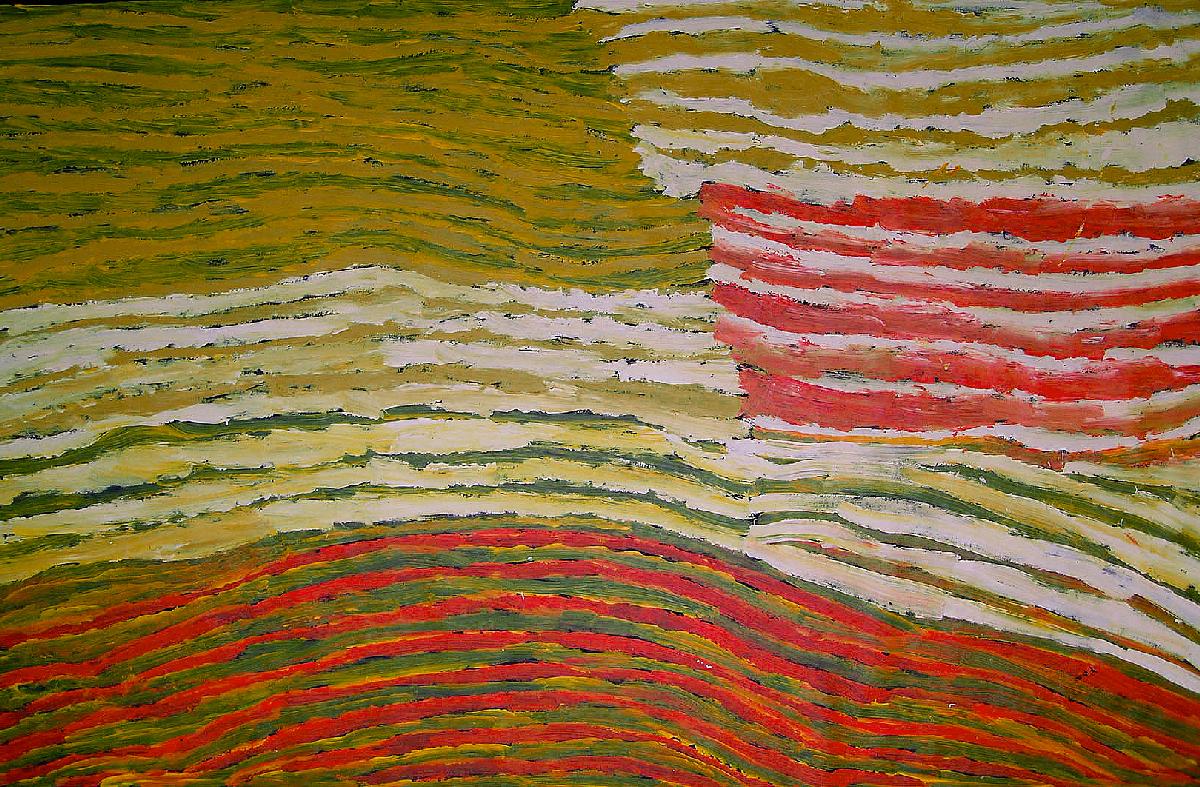Makinti Napanangka Paintings For Sale
Pandanus Aboriginal Art is proud to present a collection of artwork from some of Australia’s most renowned and emerging Indigenous artists. We have an extensive collection of paintings, artifacts, and sculptures, available for sale at our Palm Cove gallery and online store
We strive to represent both significant established and emerging artists from Aboriginal owned Art Centres in remote locations across the continent. This allows us to offer Australian and international markets a broad spectrum of fine Aboriginal art, and through these inspiring works insights into Aboriginal life and culture. Makinti Napanangka is one of these outstanding artists. Indeed, she was informally hailed “Queen of the Desert” reflecting her commanding, sweeping, energised and inspirational paintings of Central Desert totemic/sacred subject matter.
Makinti began painting late in life in the 1990s, when interest in her work was quickly followed by a number of important exhibitions held throughout the country. Her work is currently featured in museums and national galleries including the National Gallery of Australia, Art Gallery of New South Wales, and the National Gallery of Victoria. She is held in numerous private collections around the world and is highly collectible.
The Art of Napanangka
Many of Makinti’s artworks depict Central and Western Desert regions that reflect her vision and totemic responsibilities relating to the Kungka Kutjarra stories. These describe the Dreamtime travels of two sisters who traveled across vast distances conducting a ceremony that is reflected in the landscape and the subsequent physical forms and shapes that are still evident today.
For Makinti, these ceremonies and especially the dramatic swirls and flows of the sister’s hair string belts are associated with that physical formation and shaping of the landscapes. This is a major characteristic of Makinti’s paintings. She often used subtle warm ‘desert’ colours to depict the basic patterns and waves of these animated movements and added structure and form with judicious lines of contrasting colours. She placed great emphasis on the tactile qualities of painting, not just for visual appeal, but to emphasise the important causal relationships between the physical nature and qualities of the landscape and its spiritual Dreamtime origins.
Makinti was the senior female artist at Papunya Tula for a number of years where, interestingly, her style of painting contrasted with the more traditional use of colour and form used by most of the other ladies.
Contact Us




